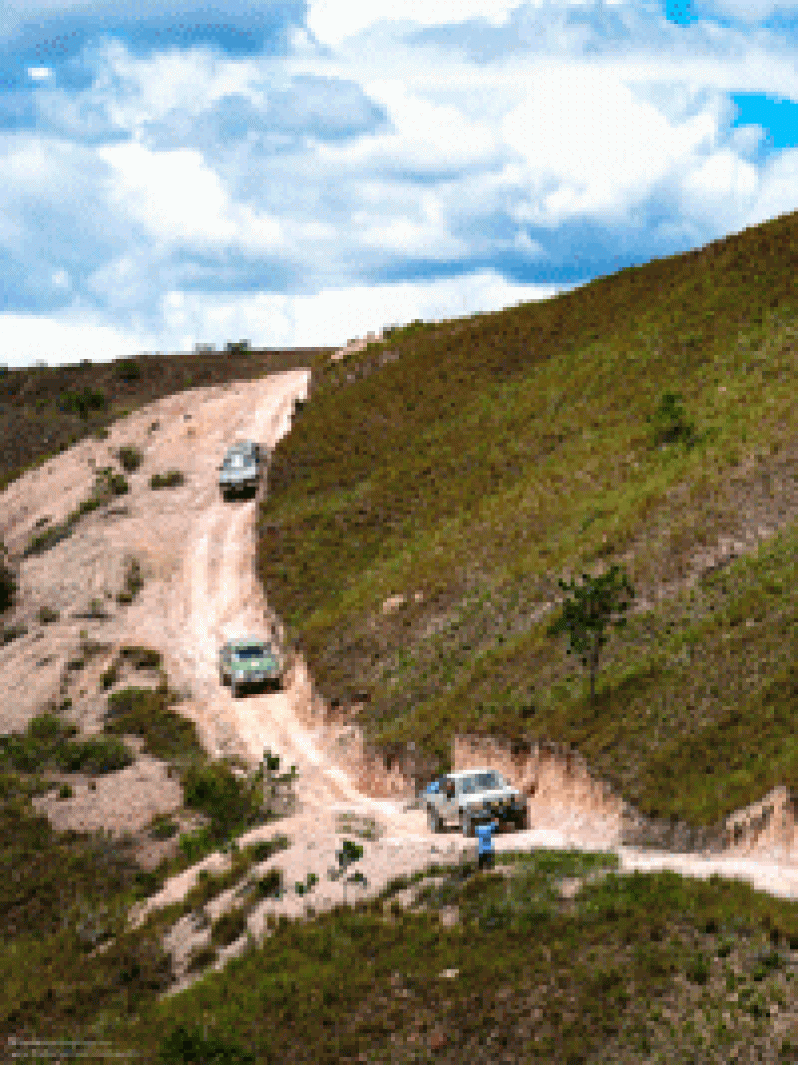Population Centres
THE largest population centre of the Pakaraima highlands is Paramakatoi Village, called ‘PK’ for short. At an elevation of 2800 feet above sea level, ‘PK’ has a population of over 7,000 persons, mainly of the Patamona tribe, or Kapun (Sky People).  This village has a secondary school, a primary school and a nursery school, as well as a well-staffed health centre. Economic activities here comprise subsistence farming and cattle rearing.
This village has a secondary school, a primary school and a nursery school, as well as a well-staffed health centre. Economic activities here comprise subsistence farming and cattle rearing.
PK is about 14 miles away from Kato, the site of the mini hydroelectric power plant being constructed with funds from the Government of Guyana and the Inter American Development Bank. (IDB)
Next in size in terms of population is Kopinang, referred to by geologists as the Kopinang sill. Kopinang has a population of 5,000 persons, who are also mainly Patamonas.
Next is Kurukabaru, with a population of 4500. At 3000 feet above sea level, Kurukabaru is higher than Paramakatoi, and is, in fact, the highest settlement in Guyana. The wind at Kurukabaru reputedly howls continuously, and the nights there are extremely cold. Even the hardiest hinterland dwellers greatly respect the cold temperature at Kurukabaru, especially at nights.
In deference to this aspect of life on this highland plateau, some have renamed the village “Coldkabaru”.
Next in terms of population size is Chenapau, approximately 27 miles up the Potaro River from Kaieteur Falls. Chenapau has a population of about five hundred persons.
Then there is Kato (population also 500), a village situated at the same level as Paramakatoi.
Orinduik, at an altitude of 1975 feet, is a diamond mining community with a population of about 400 persons, and the Orinduik Falls on the Ireng River is a popular tourist attraction.
Other villages include Kamana (population 200), which lies between Orinduik and Kopinang; Waipa, north of Orinduik Falls; Kaibarupai, Karisparu, Monkey Mountain, Tuseneng (between Monkey Mountain and Paramakatoi), Itabac and Kanapang.
A geological feature of the Pakaraima Mountains is the numerous caves found in various areas, which are said to have been occupied by the Amerindians of old, a tribe of short men and women with very big ears, said to belong to the Kanaima. A mountain in the vicinity of Kaieteur Falls is named after these cave dwellers of old.
Though extinct, the mythical name ‘Kanaima’ still strikes awe and fear in the present day residents of the Pakaraimas.
Extent of range
The Pakaraimas stretch from the valley of the Cuyuni in the north to as far south as the Rupununi. The Makarapan Mountain skirted by the Cuyuni River is the southernmost sandstone range.
A low range crosses the Essequibo and Berbice rivers, reaching up to the Corentyne; and a great elevated mass occurs in Suriname. In the distant past, this great formation of sandstone covered the greater part of Guyana and extended westwards to Colombia, but this has been eroded over millions of years, and what now obtains are dissected and eroded remnants of what has been described as the greatest mass of sandstone that has ever covered the surface of the earth anywhere.
Economic deposits
In observing layers of sedimentary rocks of the Roraima Mountain Group, a geologist named Keats (1974) identified and defined nine layers/depositional units which he named from the oldest to the youngest (and the lowest to the highest) as Units 1 to IX (Gibbs and Barron, 1993).
By following each unit, he showed the changes in the paleo-environment of the Roraima Group during the Proterozoic period, between 1.6 and 1.98 billion years ago. Then, by considering the changes from Unit to Unit, he showed how source elevation and location and basin filling led to the Roraima Basin being filled up, as all the rocks around got eroded and/or downfaulted, and then changed with time from a Basin to being the massive Pakaraimas.
It must be noted that the alluvial gold and diamonds found in many areas located at the foot of the Pakaraima Mountains, such as in Kurupung, Enachu and Eping, are derived from the erosion of the basal conglomerates at the base of Unit IV. The gold and diamonds found in Kamarang and Imbaimadai are derived from the erosion of basal conglomerates at the base of Unit VII. These conglomerates represent old river channels where gold and diamonds were concentrated, which are now eroded.
NB: The information for some parts of this story was obtained with the help of Mr. Anthony Melville of Rainforest Tours, a former Toshao of Chenapau.




.png)









